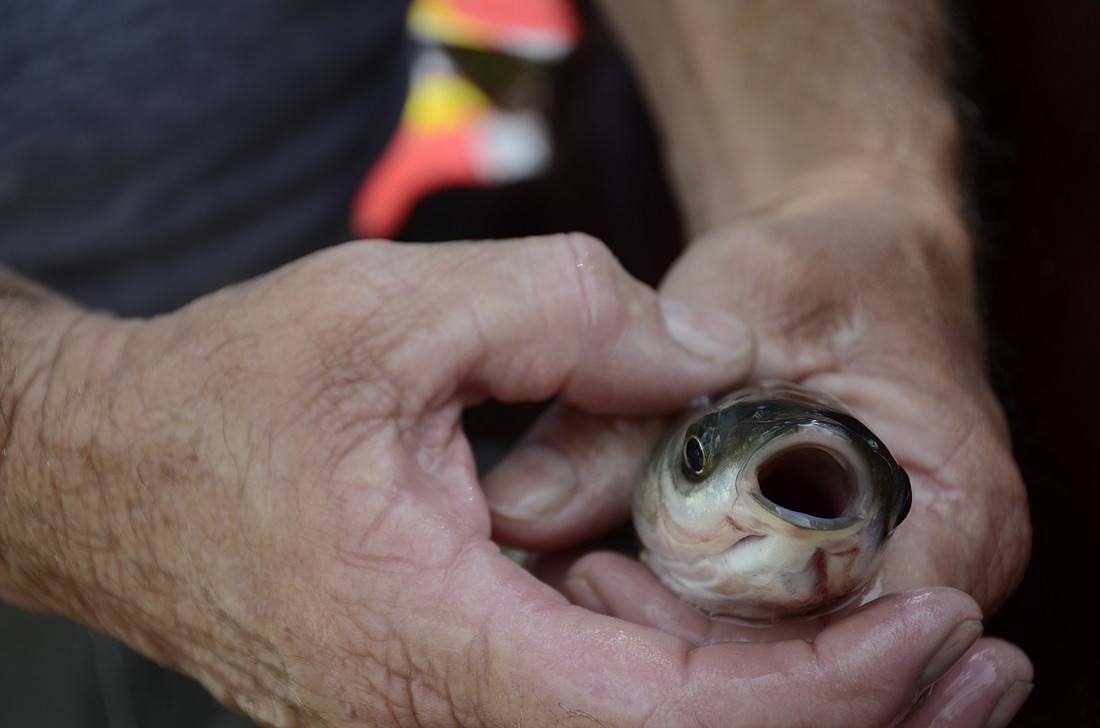- January 4, 2025
-
-
Loading

Loading

Usually with fishing, quiet is needed.
This was no different, even though the fish were going into the water.
“Rule No. 1, no talking to me while I’m counting,” Barry Eaton of Florida Fish Farms said as he shuffled fish from their tank into a net.
Eaton had 571 triploid grass carp to count out as he stocked Tara Preserve’s 54 ponds.
As Tara Preserve Community Development District Supervisor David Woodhouse and Field Manager Jim Kaluk looked on, staffers from Aquatic Systems, the company hired to manage the ponds, gently released the fish, launching a process to help maintain overgrowth under the surface.
The 571 scaly creatures released June 17 are small for now, about 8 inches long. But they’re been added for a purpose, to munch on
underwater invasive plants such as hydrilla. Tara’s ponds offer a feast of hydrilla, and the carp average around 40 pounds but can get up to 75 pounds.
Woodhouse, who oversees pond maintenance for the board, said he believes the carp will be effective, based on what he’s read, as a more natural method of vegetation control, as opposed to using chemicals.
“Some want crystal clear ponds,” he said. “We want to maintain what nature wants, a balance with nature.”
The grass carp are sterilized at the hatchery during artificial spawning. The process adds a third set of chromosomes into the fish’s DNA cells by shocking the eggs with heat, cold or pressure, according to the University of Florida Institute of Food and Agricultural Sciences Extension. The fish are tested before release to ensure they are sterile.
Getting the fish in a body of water requires a permit from the Florida Fish and Wildlife Conservation Commission, and ponds that connect to other bodies of water must have barriers installed to prevent the fish from spreading. While hydrilla is their favorite meal, the fish will start eating the beneficial vegetation or even the grass along shore when its other options are gone.
Before the carp were let into the ponds, Aquatic Systems District Manager Josh McGarry and Mike Rhodes transferred the fish into a bucket with both the water the fish had been transported in and the pond water, to help their bodies adjust to their new environment.
“You have to acclimate them to the water,” said Sarah Bowen, a Tara Preserve’s Aquatic Systems representative.
If undisturbed, the grass carp can live up to 10 years. However, they’re vegetarians, and while they’re still small they often end up as meals for other predators such as alligators, bass and birds. There’s a 10% loss rate in the first couple weeks, McGarry said. Afterward, the fish learn where to hide.
Tara Preserve isn’t the only community with grass carp. Lakewood Ranch’s CDDs have used the sterilized fish for five years. About 246 of its ponds have these grazers in them to control the vegetation.
“The use of triploid grass carp in Lakewood Ranch Phase 1 has been successful in helping to control and limit the growth of aquatic vegetation,” said Paul Chetlain, Lakewood Ranch’s director of operations, in an email. “It is a long-term, chemical-free and low-cost method for dealing with fast growing nuisance aquatic weeds.”
Waterlefe Golf and River Club is also preparing the way for carp. The CDD board gave the OK to submit an application and is awaiting FWC approval.
Tara Preserve’s FWC permit allows for 800 fish, but the board wanted to start with the 571.
“We’re going to see how these do,” Kaluk said.